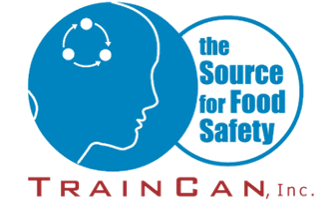Focus on Food Safety: Picking the right microbial testing protocol
Article By Dr. Amy Proulx Published July 3, 2025
Article Source: https://www.foodincanada.com/opinions/focus-on-food-safety-picking-the-right-microbial-testing-protocol/
Microbial testing of products is a time-consuming, costly, but necessary activity for food manufacturers. Companies require the selection of microbial testing protocols, both for day-to-day hold-and-test and positive release for production and for developing an incident plan. In food safety, incident planning is always a worthy activity. The moment you have an incident is not the time to plan an investigation.
Choosing the right tools
With most food products, risk assessment can help identify pathogens and organisms of interest. Risk assessment can be done by reviewing the Canadian Food Inspection Agency (CFIA) and U.S.-based recall databases. Generative AI summaries can be used with caution as they are often misleading, missing important pathogens or overextending into organisms that are not particularly relevant.
Once microbial species are identified, many food products have typical protocols for analysis. The Health Canada Compendium of Analytical Methods and the U.S. Food and Drug Administration Bacteriological Analytical Methods Manual provide most of the reference methods used in Canada.
Advertisement
Microbiology testing labs can offer advice on optimized analytical procedures because they usually handle products for a large range of clients. Labs for food analysis should be accredited with ISO 17025, Testing and calibration laboratories, and specifically for the types of tests you need. ISO 17025 is quite important, as it requires labs to participate in performance testing, which evaluates the competency of personnel, equipment calibration, quality control and traceability on analyses. In the case of a recall or other incident, insurance may require lab testing to be performed by ISO 17025-certified labs. Global Food Safety Initiative (GFSI) programs also ask for it.
As for asking for advice from CFIA, while their staff usually do not advise companies on best practices, the agency does routine directed testing and publishes the results publicly. These protocols provide insight into best practices for microbial screening for organisms of concern.
Rapid testing
Rapid testing, which often relies on a validated proxy for full microbial growth, may require additional microbial culturing and enumeration methods. Rapid tests often rely on the detection of microbial proteins or antigens using lateral flow devices or enzyme-linked immunosorbent assays (ELISA). PCR-based DNA analyses are also very fast compared to traditional microbiology. Each of these assays has limitations. Within each protocol, there’s typically a decision-making process. If the rapid test identifies the presence of a pathogen of concern, this is followed immediately by a microbial culture method. Rapid testing fulfils an important role in hold-and-test positive release, where the product does not leave the control of the company until it tests negative for pathogens. For short shelf-life products, it is beneficial to have results in hours instead of a couple of days.
Companies should have protocols on file for reference, as they can provide interesting information on sampling best practices. Health Canada protocols are available for free. However, you must email them. FDA protocols are also available for free. Private analytical organizations charge a nominal fee for a copy of their protocols.
Often, I hear from companies if it is necessary to track Total Plate Count (TPC), Aerobic Colony Count (ACC) or Total Yeasts and Moulds (TYM) as part of microbial testing protocols. These organisms are not a food safety issue but are indicative of general food hygiene. There are a few food products with standards of identity that limit the maximum amount of total bacteria. Tracking generic organisms can show trends when tracked with statistical process control charts. A good chart can show when variation in these organisms is normal or ‘common cause variation’ versus atypical or ‘special cause variation’. These charts can be quickly evaluated using the Nelson Rules to determine trends.
As an addendum to a recall plan, a microbial incident plan can help with rapid response and decision making.
Planning for microbial testing and incident response supports quick and effective action during recalls or contamination events. It’s worth taking time to review procedures to optimize for best performance.
Dr. Amy Proulx is professor and academic program co-ordinator for the Culinary Innovation and Food Technology programs at Niagara College, Ont. She can be reached at aproulx@niagaracollege.ca.
This column was originally published in the June/July 2025 issue of Food in Canada.
